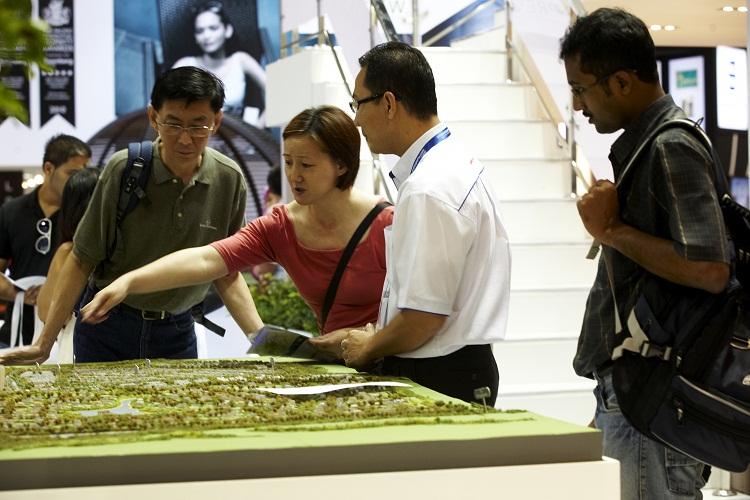
How will the 6.9M population target impact the property market?
The challenge to house Singapore's population continues.
The Singapore government, through its White Paper titled “A Sustainable Population for a Dynamic Singapore” released just recently, targets to grow the total population to between 6.5 and 6.9m by 2030, up from 5.3m in 2012 to mitigate Singapore's low Total Fertility Rate of 1.2, through controlled immigration. This will comprise a resident population (citizens and PRs) of 4.2 to 4.4m, up from 3.8m in 2012, and the rest will be non-residents.
To cater to the increased population, sufficient land has been set aside for an additional 700k homes, 200k of which are already on track for completion by 2016.
New estates will be built in Bidadari (central Singapore, east of Toa Payoh), Tampines North and Tengah (western Singapore, north of Jurong Lake District). "Live, work and play" concept will be extended from Jurong Lake District, Paya Lebar Central and One-North, to Woodlands, Serangoon and Punggol.
Here’s what experts had to say:
Conrad Werner, analyst, Macquarie Equities Research
Slower population growth implies slower housing demand. This trend will play out against a backdrop of record completions. As the white paper highlights, 90,000 private housing units are set to come on-stream through 2016, well ahead of the cumulative demand of
~64k units we forecast.
Chua Yang Liang, head of Research South East Asia and Singapore, Jones Lang LaSalle
To support the overall growth in population, new areas have been identified : Bidadari, Tampines North, and Tengah. Given the current market trend, Tampines North, Bidadari and infill development within mature housing estates such as Dawson Estate and East Coast will be more popular.
While we welcome the planned addition of the Jurong Region Line and extension of the Northeast Line as they will improve the overall accessibility to the future Tengah and Punggol towns, we cannot emphasise the need to have a coordinated completion of such public infrastructure with the developments to mitigate any potential overloading of the existing system. While the overall rail density would eventually match those in London, what is equally important is the service and reliability of this rail system.
Another concept that caught our attention is the creation of more commercial nodes i.e. the North Coast Innovation Corridor and the Southern Waterfront City. Of the two, the Southern Waterfront City could gain more popularity given the proximity to the city center and the existing commercial node in the Harbour Front area. The reintroduction of Seletar as another regoinal centre is worth watching given the growing aerospace industry in Singapore. While the North Coast Innovation Corridor is a long term plan, it could see some heightened interest should the development of the Iskandar region gather greater speed.
Overall, we welcome the transparency of this announcement of the land use and infrastructure plan. With a population expected to reach 6.9million by 2030, the density per unit area by different land use group will naturally rise. For residential, the density will move from 508 to 531 persons per ha while in industry/commerce it could move up from 523 to 539 persons per ha. The level of Parks and Nature Reserves could also see an increase from 891 to 952 persons per ha.
While these indicators suggest a higher density of person per unit area, there will be an opportunity for the real estate industry to innovate and create more conducive urban environment through clever urban designs and integration of complementing land uses such as the injection of greater green and public spaces into the urban fabric to mitigate this density. To this end, we eagerly await the articulation of these broad strategic concepts into development concepts at the review of the Master Plan in 2013.
Wilson Liew, analyst, May Bank KimEng
From now till then, expect the Ministry of National Development to announce various local plans in phases. First off, we expect the government to accelerate the development of previously identified growth areas, mainly Jurong Lake District, Paya Lebar Central and potentially Kallang Riverside. These were identified as "live, work and play" districts to decant commercial activity away from the CBD and to reduce commuting time where possible.
To achieve this, we expect more land parcels in these areas to be released via the Government Land Sales programme. Jurong Lake District will further be enhanced with the addition of the 20-km Jurong Region Line, expected to be completed by 2025 and will link the future Tengah new town to Jurong Lake District.
Secondly, we expect the planning parameters for these areas to be firmed up and gazetted in MP2013. We do not expect MP2013 to otherwise show significant plot ratio changes across the island, and in our view, there is sufficient buffer for more land development if required, especially beyond 2030. Areas include the Tanjong Pagar waterfront city (PSA relocating its port operations by 2027), Marina South and beyond (30 potential white sites and more for residential) and Simpang new town (northern Singapore, near Sembawang).
The steady increase in population will also continue to provide a need for quality homes, which will keep local property developers and HDB contractors busy for the next 15-20 years.
























 Advertise
Advertise










